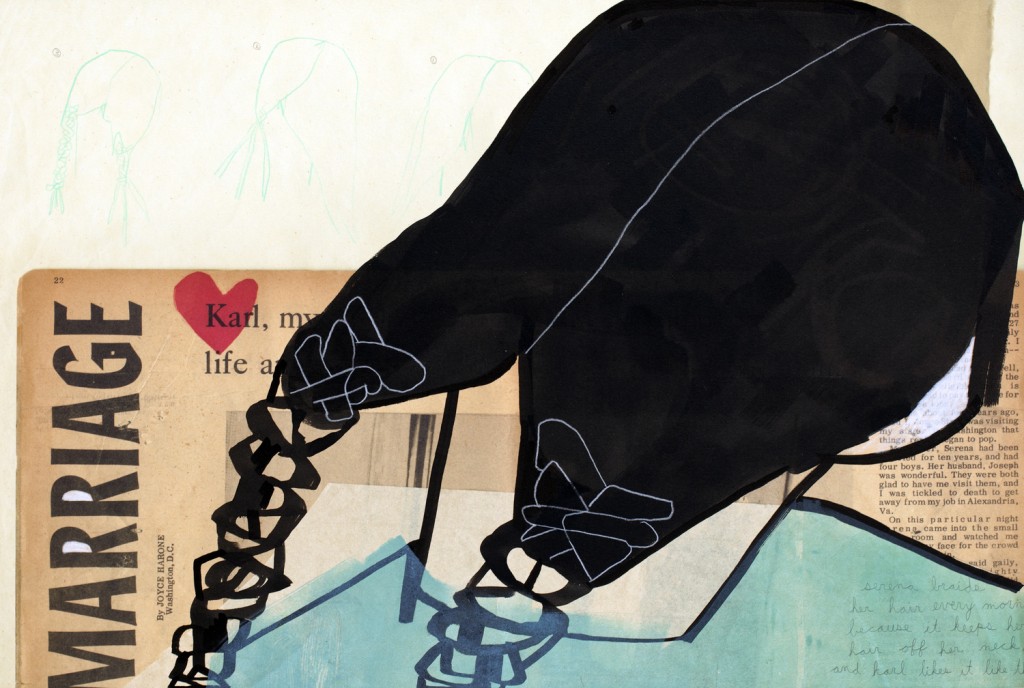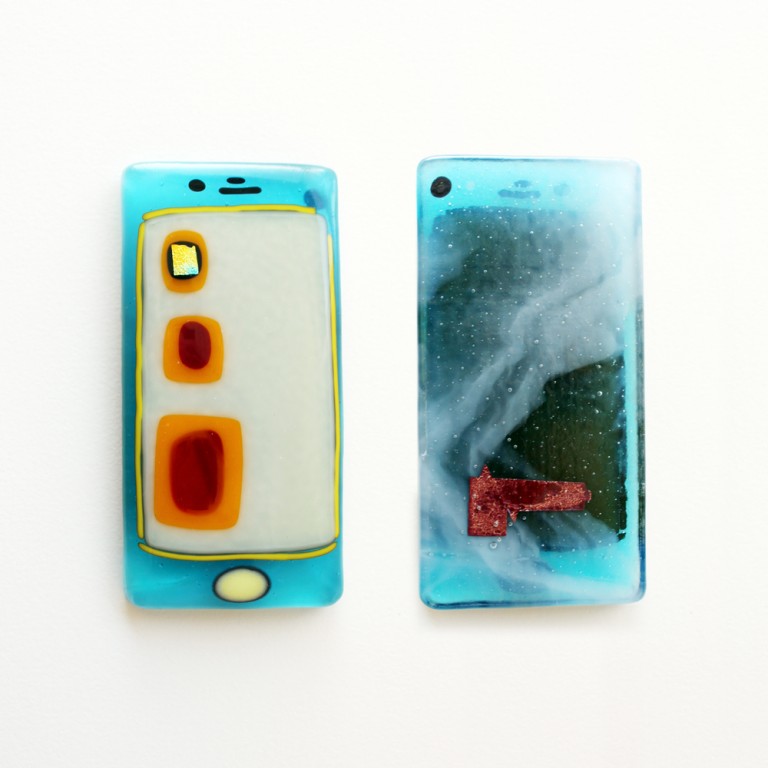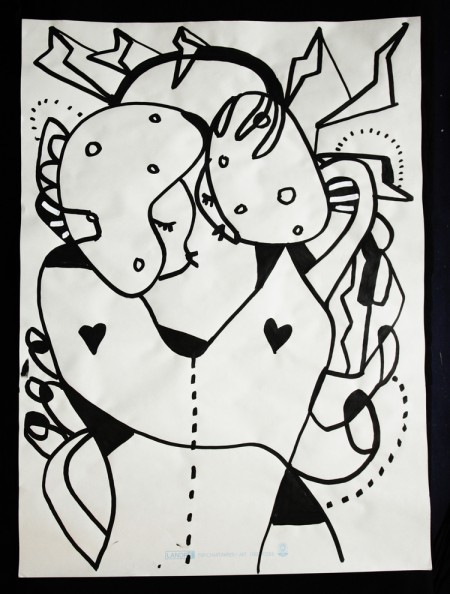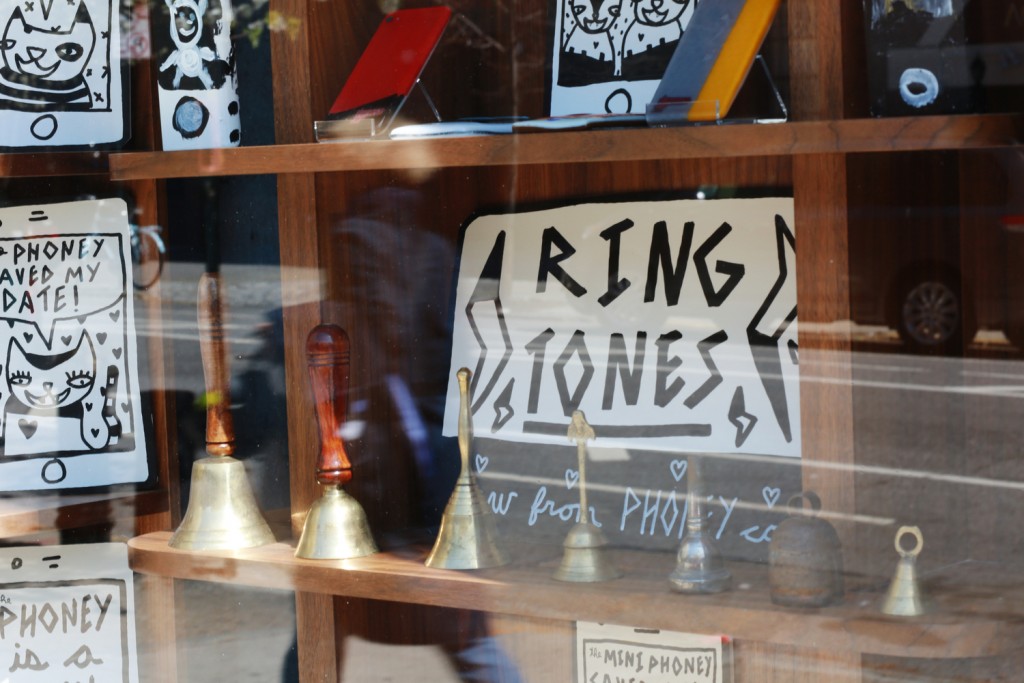Tim Fite is a visual artist and musician, and one of four artists this summer that took part in a pilot season for SPACE Gallery‘s new Artist-in-Residence program. Trained in printmaking, Tim works across a variety of mediums including installation, music, and video, though drawing has become his foundational lens to making work. His most recent project, RESIST: DRAWN, addresses current issues of police violence and systemic racism as videos of time-lapsed drawings that accompany songs. Using a range of disciplines in unison rather than individually, the goal of his practice is image-making which begins with drawing.
Meg Hahn met with Tim for a studio visit while he was in residence at SPACE Studios and Pickwick Independent Press in July to discuss his practice, his relationship with visual art and music, and a look into what he’s worked on during his time here.

Meg Hahn: Can you describe your practice/background and what you’ve been working on at SPACE and Pickwick?
Tim Fite: My parents are both painters, so I could’ve stayed and learned from them. I ended up studying printmaking at Rutgers because they had a really great department with a master shop, so we could also work with the master printers printing editions for museums. I ended up making a music career accidentally and kept visual arts more to the side. Touring, playing shows, singing, recording, was my main focus because it was the first job I got out of college, but I draw constantly and still keep my printmaking skills up.
In the past three years I’ve been doing more visual art than music which has been fueled by starting a friendship with a printer in Switzerland, Tom Blaess. He invited me to his shop and to live in Switzerland for a month to make a show with him. That lit the fire for me. Here I’m trying to do what I do with Tom, but on my own. It’s a funny way to do printmaking because it’s not edition oriented. It’s really about using printmaking as a tool to speed up drawing. Rather than a white piece of paper, I start from monoprints that I’ve already made that are very abstract. I can work fast as a printmaker because I’m not thinking too much about the hard planning. While a lot of people painstakingly prepare their edition I just rattle off monoprints then draw. All I care is that I have something lush with some tooth to it, to dig into when I draw. Once the drawing develops I decide whether or not to go back in with more printing, but usually it’s small. It starts very slow, but once you hit your stride the finished work stacks up and you have drawers full of unique pieces rather than one drawer of one image. I prefer that greatly. What do I need an edition for? It’s a really nice way to work because it helps create a space for drawing.
MH: Were you always interested in music, and then once school finished more music opportunities came up?
TF: Doing music was fun. It’s like the shy person’s way to be social. It’s really easy to close off and just make your work, so it forced me into social worlds. The time here [at the residency] makes me so happy because I work all day. There’s little interruptions of friendly things, but I get to dive in all the way and just think, “How do I bring this picture to life?” That’s the most rewarding relationship I think I’ve ever had — me and the picture. I could hang out with those pictures all day every day.

MH: You seem to work across a variety of mediums. Do they inform each other or do you see them separately?
TF: I’ll try anything because it’s fun to make stuff. For most of my projects I’ll come up with a theme, how I’m feeling, and learn a skill by making a body of work. I try new things by approaching a subject. With the The Phoney, I was playing a show in Chicago and got snowed in. From stage I said, “If anybody in the audience has anything fun for me to do the next three days let me know.” Afterwards, a woman who runs a glass studio invited me to come in and it turned into a project where I came back and did a 4–5 day residency and made these phoneys, and it fit really well with the concept of the album I was working on.
The prints I’m doing here are the first step in the songwriting process that I’m gonna experiment on with a friend. I’ll give them to Daniel, he’ll write a song beginning to end on the guitar without any input from me, I’ll write lyrics over it, and then we’ll work together. Everything starts with drawing for me. It takes on a much bigger role than how I approach music. Seeing, drawing, and feeling — that’s the triangle that holds up everything: the visual, the emotional, and the physicality of the hand. If all those things line up, then the ways I can address whatever I’m doing is infinite. I take a very drawing approach to all the different things I do.
MH: How do you see your relationship between visual art and music/performing? I see drawing and music in that you can’t hide your mistakes and it can’t be covered up as easily.
TF: Everything I do is an effort to exorcise whatever demons, even if it’s happy demons, to get them out. There’s different ways but drawing is the most immediate and effective. Performing is complicated because I’m giving my demons to people who are with me and they’re giving me theirs back. There’s this wild exchange but it’s just like drawing because you’re moving and it’s always in a direction. You can make adjustments, cover up, restart, erase.
The hope is that everything I make feels whole. For years I tried to separate drawing and music entirely. There was Tim the rapper and singer and quiet Tim the drawer. People who like my music didn’t know I made real art. They see some cute doodles I do to help with the arch of the show but most of the work from my early shows I wouldn’t even consider real art. It was just entertainment. I think that’s one of the biggest mistakes I made. I wanted those worlds to be whole because I didn’t like being polarized. Do I feel ashamed of one world when I’m in the other? Am I an asshole who thinks the people who like my music won’t get the art I’m making because it’s harder to digest? I may be, but I want to stop that. The RESIST record with the angry songs and drawings, even though it hurt to do and it’s a hurtful subject matter, it’s the most unified I felt anything I ever made has been. It was a good feeling for me.
MH: Can you talk about working independently versus collaboratively?
TF: Collaboration is good for me because I have a tendency to go pretty dark. When I collaborate I find myself more open to avenues of making. I think about it like student driving. You’re in the driver’s seat, you got the wheel, but there’s a dude in the passenger seat who also has a brake. There’s a safety and peace of mind if you have the right partner. It’s been a healthy give and take where maybe I’ve pushed them places they wouldn’t go, and they hold me back from the places I always go, or let me go, and give me somewhere safe to return.
MH: Are they friends?
TF: It’s people I know or sometimes people I didn’t think I would know. Tom was an accident. There’s a great guy in Philly named Chris Powell, and we were working on some songs for a couple years. The album’s taking more time than anything we’ve ever done because we know it’s that good. It’s not worth trying to make it happen before it’s time. Having someone who gets that, it’s beautiful. I’m really hard on myself and I shouldn’t be. You wouldn’t be like that to someone else, so why be like that to yourself? I think most artists have that dialogue.

The last big tour I did was in Europe with a band called Bonaparte, and they have a lot of action and dancers on stage. One of their dancers left, so Toby asked me and I was like, “I’m not dancing, but I can draw pictures.” So when the band was on stage I drew the crowd during this very high energy show. It was rad because usually it’s dark, but it’s bright on stage, so I made all these drawings, maybe 4 or 5 a show. At the end we put up all the drawings in this huge grid at Platoon Kunsthalle. It was so cool to have the nightclub become the studio. It wasn’t my adversary, it’s my place to work. I’ve been trying to draw in environments where I feel most out of place. It becomes where I feel most alive and welcome inside the drawing. No more of being embarrassed or saying these lives are separate. Put ‘em together and I’m much happier.
MH: Did they give you a lot of creative freedom?
TF: Tons. It’s really cool when your friends trust you to do what you do. When I work with musicians on my records they laugh because it’s the weirdest way they ever recorded. I’ll have a beat and say, “Just play.” And they’re like, “I’ve never heard this. What are the chords, how should I do it?” Just play over it. I don’t care if you mess up, stop and keep going. You can always tighten it up with technology, and printmaking is the same. As long as your Plexiglas and paper are square your plan can go out the window, then drawing can bind it back together.
One of the things that’s cool about printmaking is the relationship of the artist and the printer as a unit. The artist wants to make prints and that’s more common now, but the tradition is that the artist has no clue and you need to work with someone who’s mastered these techniques to come to this middle ground of these two people and two things working together. I think for a lot of artists it can be extremely liberating. Painting and drawing is like fighting with your material for your whole life. You can work together to really knock something cool out of the park. When you find your way with someone that moment where it all gels is extraordinary because you’re not alone. The immediacy of hand to art is gone, but the payoff can be even bigger because you end up with a ton of work. There’s no better feeling to me than a brush on paper. It’s like laying in the ocean when it’s nice and calm, but you only get one mark. With printmaking you get that a billion times over. How I’m doing the monoprinting and drawing together to get a bunch of unique pieces instead of an edition is so rewarding. I’ll go home with twenty 16″ x 16″ monoprints, eight or nine finished drawings, about 2,500 offset pictures for the songs to give to my friend Dan which I can use for the album to sell. I’m making 5,200 of a little book to bind on the risograph, and that’s all in the past two weeks because of those machines. Some people get very hung up on everything having to look exactly the same. Who else besides the master printer holds the whole stack? I would do the letter press, grind them through, make sure every last serif was crispy. It’s mind numbing. It’s so much more rewarding to have a good picture.

MH: There seems to be a shift where you focused on our dependence on technology to police brutality and the social injustices we’ve been witnessing lately. Do you see a connection between these? How did one lead to another?
TF: I like concept records that go from beginning to end, 15 songs that are all related. I’ll use records to process something usually sociopolitical. Every record I’ve made, even with the band that seemed entirely vapid, is always focused on injustice. It’s always been something I think about and it’s in the pictures too. There’s always a bad guy, a good guy, a dog who bites someone who doesn’t deserve to be bitten. The world ebbs and flows based on the pain we all feel together. Most people ignore it because it’s too hard to deal with, but I can’t, so I make a record, or drawings, or do something to get it out because it hurts real bad. I want to say something so I don’t feel like a bystander. All you can do is be positive, to counteract some of the overwhelming amount of negativity. I make these songs, this art. How much negativity does it counteract? I don’t know, but my activity comes from a place of caring, and as long as I care about something it’s balancing out not caring or caring about the wrong things. People care about power, money, violence, keeping their fucking badge. It’s hard, but learning to balance some of the ugly pictures with some of pretty pictures is a good lesson. I’m trying to do that more because you can’t attack people all the time.
MH: What drew you to Portland? Can you talk about any future plans?
TF: Greg Jamie had a club in Biddeford I played some shows at and my dad’s best friend is a printmaker and sculptor named Charlie Hewitt. I would come and play shows with Greg, then stay with Charlie and catch up, so it felt very comfortable here. Charlie had me up to make some prints and I met David Wolfe, Lisa Pixley, a bunch of folks in the printing world here. I played a couple shows at SPACE and it organically snow balled into this beautiful residency. Hopefully I’ll come back and do more. The sense of community and positivity that art is important, is really special and it’s not something you can go to another town and find.
I have a solo show in Switzerland of some of the work I made with Tom in October, so I get to go back there. Then the collaboration with my friend in Philly will hopefully get those songs together. It’s feel-good rap music. We both love art and rapping. I sent Dan a picture of something on my desk and the music he wrote for this picture was so spot on. The picture was a broken silhouette of a wheelchair and some abstract shmooshes, and the music he wrote sounded like that. It’s fun because you relinquish so much control, but it’s okay because you’re giving it to someone you trust. It’s gotta be the right people. Maybe it feels wrong at first, but you can tell there’s something past all that wrongness. Do a million things wrong, have a few fights, give up a few times, in order to find the nice thing.
Tim Fite was an artist in residence at SPACE Studios and Pickwick Independent Press from July 18–31. You can see more of his work at http://www.timfite.com/.

Meg Hahn currently lives and works in Portland, Maine. She graduated from Maine College of Art with a BFA in painting and a minor in Art History. Meg was a finalist for the Joseph A. Fiore Painting Prize (Damariscotta, ME), and has attended the Vermont Studio Center (Johnson, VT), Hewnoaks Artist Colony (Lovell, ME), the Monhegan Artists’ Residency (Monhegan Island, ME), and will be a resident this summer at The Sam and Adele Golden Foundation Residency Program. She is also interested in other forms of art practice including curation. Meg is a co-director at Border Patrol (Portland,ME) and works out of the SPACE Studios building.

